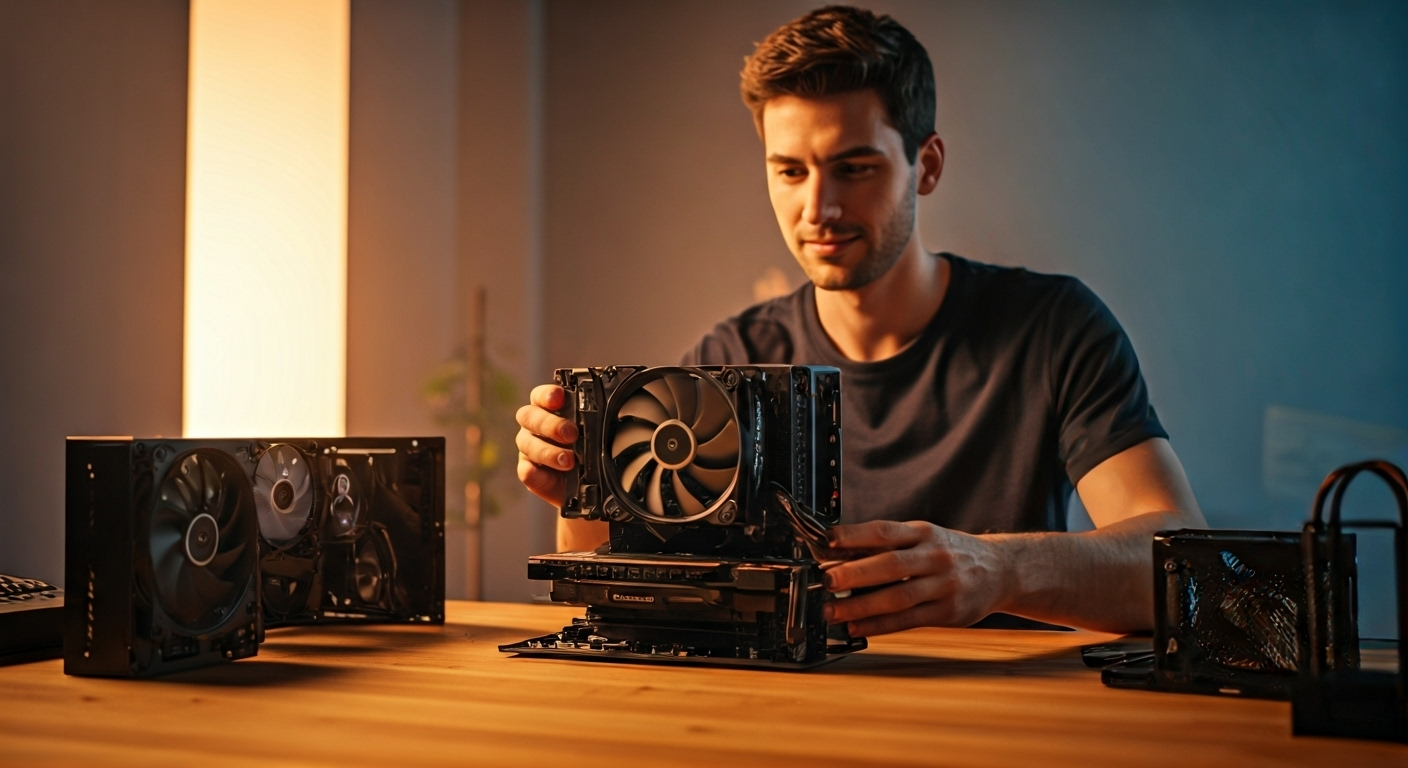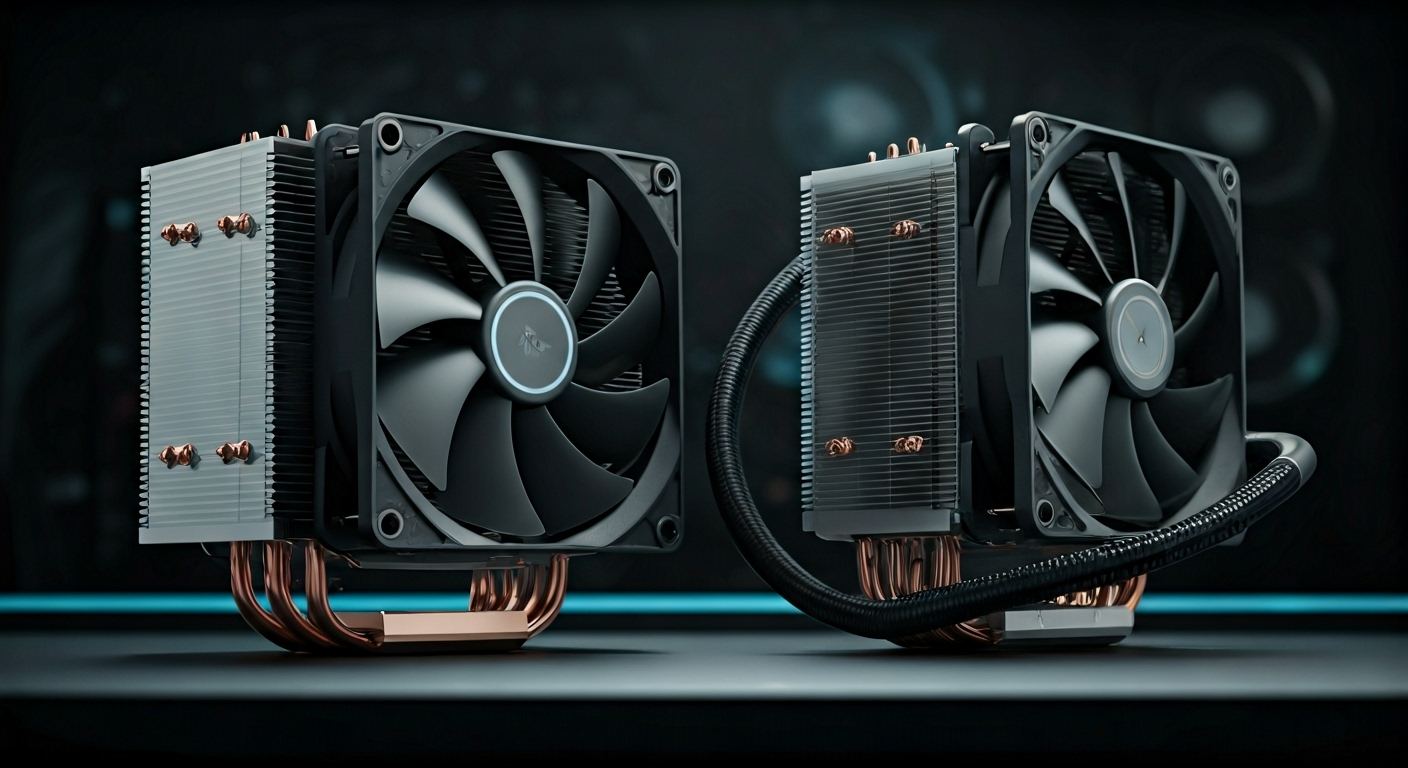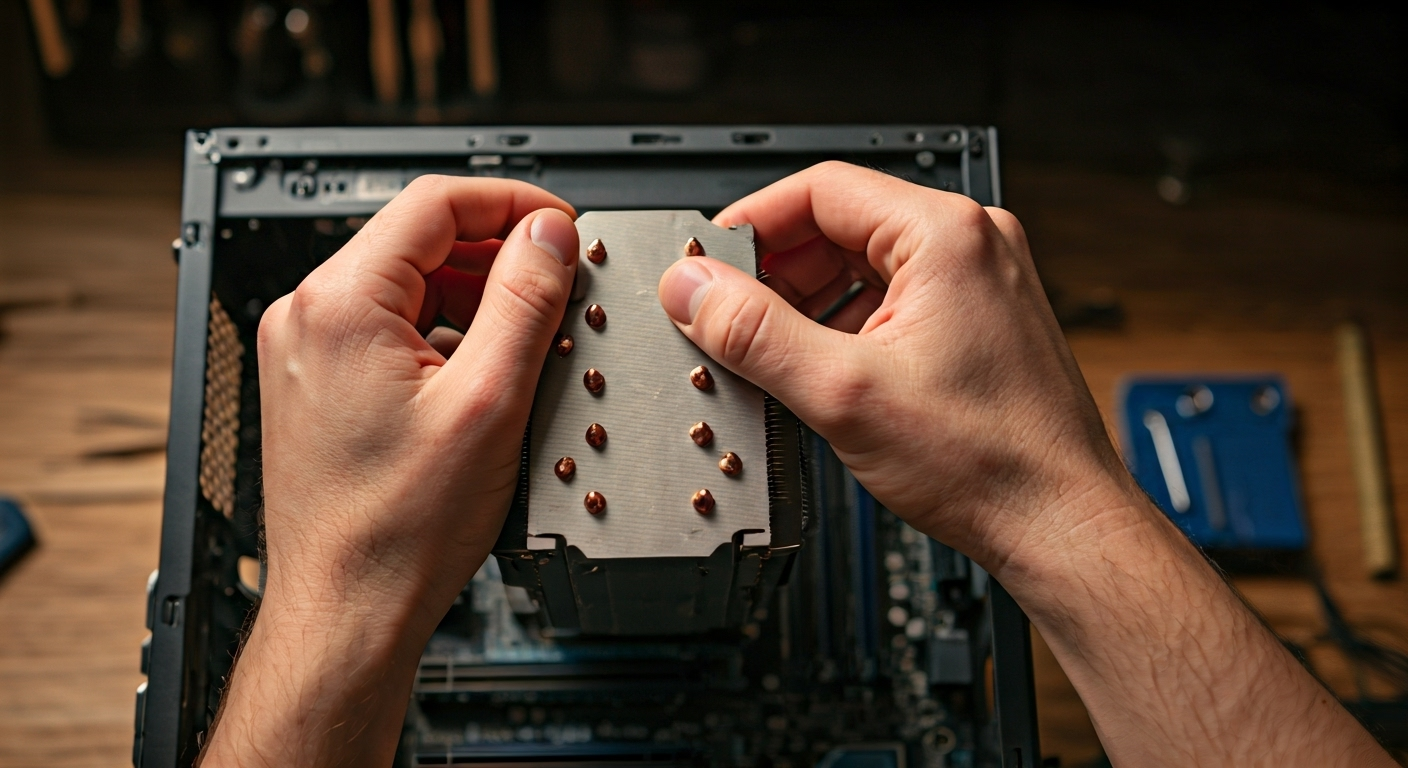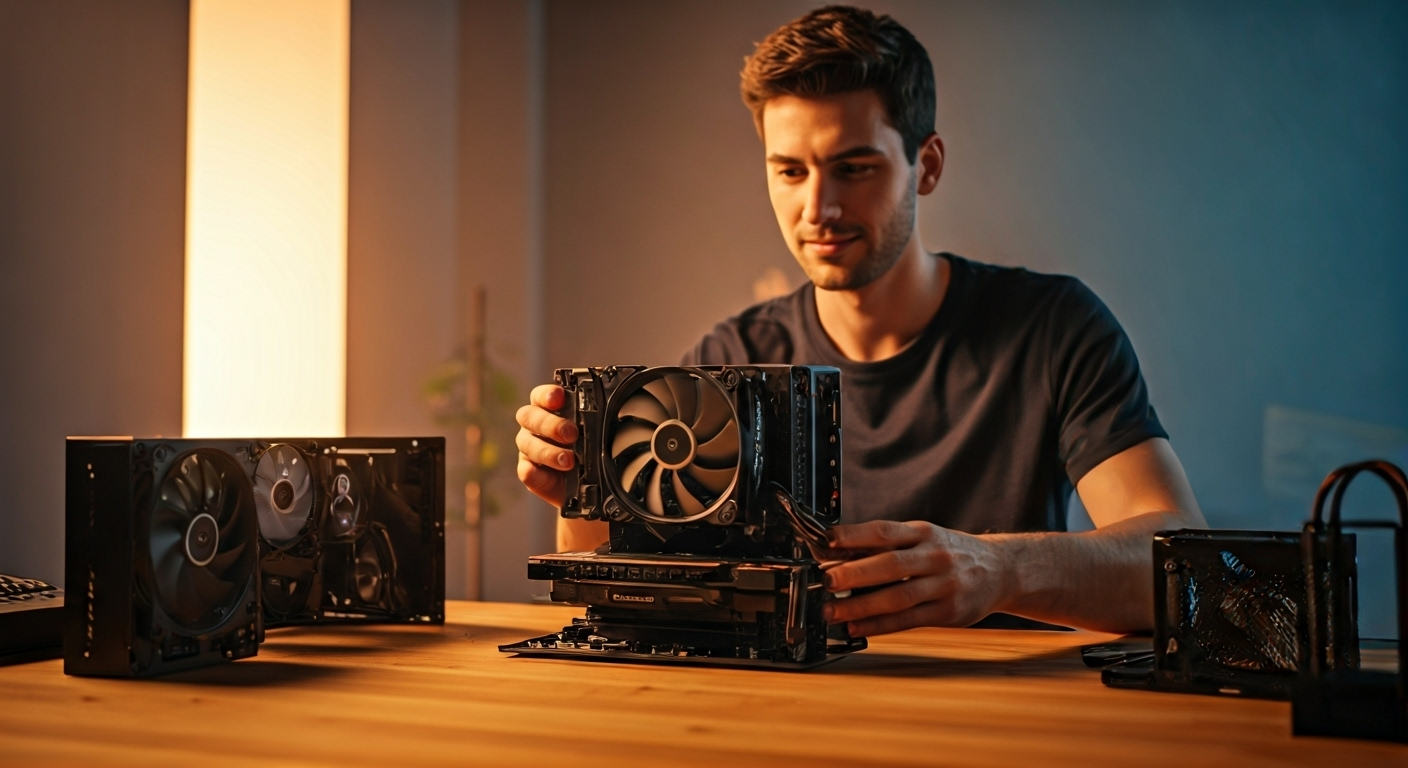Key Highlights
- Correct CPU cooler installation is crucial for maintaining safe temperatures and preventing damage to your PC system.
- Understanding the difference between air coolers and liquid (AIO) coolers helps you select the best option for your needs.
- Always clean both the CPU lid and the cooler’s bottom plate before applying fresh thermal paste.
- Applying the proper amount of thermal paste ensures optimal heat transfer and prevents overheating.
- Following a step-by-step installation guide and avoiding common mistakes increases the longevity and performance of your PC.
- Essential tools and workspace setup, as detailed in your motherboard user manual, are key for safe and efficient installation.
Introduction

Installing a CPU liquid cooler can look hard at first, especially because there are different types, like air and liquid cooling. It is important to know the basics so your PC system can work at a good temperature. You need to use thermal paste and fix the cooler the right way. Each part of this helps keep the sensitive electronics working well for a long time.
This guide will show you each step, so you can put in a new CPU cooler the right way. You will learn how to use thermal paste, and how to fit air or liquid cooling. This way, you will help your PC system stay cool and work better.
Understanding the Importance of Proper CPU Cooler Installation
Making sure you put a CPU cooler the right way is important for keeping your PC system working well for a long time. A good install helps your cpu cooler get rid of heat much better. This keeps sensitive electronics from getting too hot. If your pc system gets too warm, it can hurt how things run. Putting the cooler on wrong might make the parts touch badly, so the CPU can overheat. Before handling any PC components, please take necessary precautions to prevent damage. This might cause your system to slow down, or a part could break. If you are doing a new system build, knowing about this can help you keep your PC fast and healthy. It also helps your sensitive electronics last longer.
Why Proper Installation Matters for PC Performance and Longevity
Proper installation of a cpu cooler is important for the stability and performance of your pc system. If you mount the cpu cooler in the right way, it will help pull heat away from the cpu lid. This stops it from getting too hot. Overheating can slow your system down or even damage sensitive electronics. Using the right amount of thermal paste also helps heat move away from the cpu lid. This keeps temperatures where they should be. Making sure the cooler lines up well and sits right on the cpu lid can help your system last longer. Your pc system will stay reliable and keep working well for a long time.
Risks of Incorrect CPU Cooler Installation
Not installing a cpu cooler the right way can be a big risk for your PC. Overheating is one of the main problems. This happens when the cooler does not touch the CPU right, so heat does not get moved away as it should. When this goes on, your sensitive electronics can get damage. Your PC may not work well, and it will not last as long. If you do not line up the retention clips the right way, or use them wrong, you can break some parts. Also, old thermal grease does not help with cooling, so heat stays in your CPU. It is important to follow rules and use new thermal grease. This is the best way to keep your PC cool and working well.
Types of CPU Coolers: Air vs. Liquid (AIO)

There are many ways to cool your PC. The two most popular choices for people who like to build PCs are air coolers and liquid (AIO) coolers. Air coolers use a heatsink and a fan to move heat away from your CPU. They are simple to put in and need very little care. Liquid coolers work by moving coolant around the CPU. They cool better and are often more quiet. But, AIO liquid coolers can be harder to set up. You also need to think about where you put the tubes and the pump. In the end, what you pick comes down to what you like and what your PC needs.
Key Differences Between Air and Liquid CPU Coolers
Air coolers use a heatsink and a fan. These stock coolers work together to pull heat away from your CPU by using the air around it. Air coolers are often simple to put in, and they do not cost as much as other options. This makes them a good choice if you are new to building computers.
Liquid coolers use a liquid to move heat out from your CPU. The liquid runs through tubes in a closed loop, carrying heat away. Liquid coolers be better at removing heat and are often quieter, especially when your computer works hard.
When you understand how these two cooling options work, you can pick the right one to keep your machine cool. This helps you make sure your sensitive electronics last longer and work well.
Pros and Cons of Each Cooler Type for Beginners
Air coolers usually cost less. They are simpler to set up, so they are good for people who are new to this. Most air coolers have a design that gives good airflow. But, they can have trouble keeping very powerful CPUs cool when you are doing hard tasks. Liquid coolers, on the other hand, give better cooling. They often look nicer, too, which many people like for custom setups. But setting them up can be harder. They also might have more problems, like the pump breaking or leaks happening. Thinking about all these things can help you pick the best one for you.
What You Need Before Starting the Installation
Before you start the job, get the tools you need. You will need a screwdriver, a free cloth, and isopropyl alcohol for cleaning. Make sure you have fresh thermal grease, as this particular thermal grease product will greatly enhance your setup. Thermal Grizzly is a good choice for this. It helps a lot to set up your work area. Touch a grounded metal object to stop static discharge. You should also look in the motherboard user manual and check the manufacturer website for info about your cpu cooler and its retention clips. Keeping things neat will help you finish the install quickly and without problems.
Essential Tools and Materials Checklist
Before you start putting in the new cpu cooler, make sure you have what you need. You should get a Phillips-head screwdriver, a tube of fresh thermal grease, and an isopropyl alcohol wipe to clean with. Get a grounded metal object so you can get rid of static electricity. You will also want to look at your motherboard user manual. It gives you tips on how to install the cooler right. If you have all these important things ready, the setup will go more smoothly. You’ll also help your pc system keep the appropriate operating temperatures.
Preparing Your Workspace and PC Case
Making sure you have a good workspace is important when you want to install a cpu cooler. Begin by clearing away any mess and keep sensitive electronics away, so you don’t break them by accident. Before you touch any parts, use a grounded metal object, such as the system metal chassis, to get rid of static electricity from your body. Make sure your PC case is open and has no dust inside, as dust can block airflow and cause problems. Put your tools nearby so you can get to them quickly. It also helps to look at the motherboard user manual before you begin. Doing all this will help you get the job done fast and with no problems.
Step-by-Step Guide to Installing a CPU Cooler

Start by cleaning the CPU and the cooler contact surfaces. Use isopropyl alcohol to wipe off the old thermal grease that may be there from before. Then, put a small, pea-sized drop of fresh thermal paste on the top of the CPU. Make sure it spreads out to cover the area so the heat can move well. Place the cpu cooler over the top of the cpu. Be careful that the retention clips line up right. After that, secure the cooler so it stays on the CPU. Plug the fan power lead into the cpu fan header location. It is good to check the airflow direction to help your computer run at the appropriate operating temperatures.
Step 1: Cleaning the CPU and Cooler Contact Surfaces
First, take off any existing thermal grease from the top of the CPU and the bottom plate of the CPU cooler. This step is important for good heat transfer when replacing with a new unit. You can use isopropyl alcohol and a free cloth to wipe the top of the CPU and the bottom plate of the CPU cooler. Make sure there is no residual thermal grease left behind. This way, both parts are clean and ready for new thermal paste. A fresh layer of thermal paste gives the best coverage and helps move heat out of your CPU. Clean contact surfaces help with keeping the CPU at the appropriate operating temperatures and make everything work well.
Step 2: Applying the Correct Amount of Thermal Paste
Applying thermal paste the right way is important. It helps with heat moving between the CPU and cooler. First, use a free cloth to wipe off any existing thermal grease from the cpu lid. Be sure there is no leftover paste. Put a small, pea-sized amount of fresh thermal paste in the center of the cpu lid. When you put the cooler on, the pressure will help the paste spread out for the best coverage. You can find additional tips in the thermal grease section of this article. This step helps keep appropriate operating temperatures for your computer.
Step 3: Positioning and Securing the Cooler for Proper Contact
Getting the cooler lined up the right way, especially on the side of the heatsink, is very important in this step. It has to sit snugly on the top of the CPU for good, even contact. Pay close attention to how the retention frame fits with the bottom plate of the cooler. You should secure the cooler by gently tightening the lock. Do not make it too tight or too loose, because too much force might hurt the sensitive electronics inside. This setup will help your pc system get good heat transfer. That helps keep the parts at the right, appropriate operating temperatures when you do things like heavy work or play games.
Step 4: Connecting Power and Setting Up Fan Orientation
Connecting the power leads the right way is important to get the best results from your cpu cooler. Find the cpu fan header and RGB header location on your motherboard. It is usually easy to spot and clearly marked. Take the fan power lead from your cooler and plug it into this header. Make sure it fits well and is not loose.
Next, think about which way the fan is facing. To have good airflow, set it up so the fan pulls cool air in from the front. Then, it should push the hot air out the back of your case. This setup will help your computer keep appropriate operating temperatures and make all parts work better.
Common Mistakes to Avoid During CPU Cooler Installation
Over-tightening the cooler can harm your sensitive electronics, so you need to find the right balance. If the parts do not line up the right way when you put them together, the thermal contact will not be good. This can stop heat from leaving properly.
When you use thermal paste, be careful. Using too much thermal paste or not enough can both cause problems. Too much can block the heat from getting out, but not enough leaves spots that become very hot.
Check the air cooler to make sure it is facing the right way for good airflow. This is important to keep things cool.
At the end, always look at the fan power lead and the retention clips to make sure they are connected right. Double-checking stops you from making simple mistakes.
Over-Tightening, Misalignments, and Thermal Paste Errors
If you tighten the screws on your cpu cooler too much, it can bend the cooling surface. This can lead to bad contact and your system may get too hot. If parts do not line up right, you get gaps that keep heat from moving well. This can lower how well your computer works. Also, mistakes with thermal paste can hurt cooling. Using excessive amounts or leaving old paste can block heat from spreading. You need to use fresh thermal grease and spread it well on the edges of the processor. This gives the best coverage and helps your pc components last longer.
Ensuring Proper Cooler Orientation and Airflow
Orientation and airflow are very important for good CPU cooling. You need to put the cooler in the right way to help air move better, sending cooler air to the CPU. This helps take away heat from the CPU more easily. When you put the cooler in, make sure you line up the retention clips and fan with the case design. That way, the air will not get blocked. Use the CPU fan header for the power supply, so the cooler runs at the right speed. This helps a lot with keeping things cool. It’s a good idea to set up a clear path for airflow. Doing this will help your PC components stay at the right temperatures.
Conclusion
Installing a CPU cooler the right way is very important for the performance and life of your PC system. When you follow the steps given and do not make common mistakes, you help the cpu cooler keep your system cool. This is good for the sensitive electronics inside and stops them from getting too hot. It does not matter if you use air or liquid cooling. The right installation lets your pc system work better and more stable. If you pay close attention and use the best methods, your new cpu cooler will let you use your PC with ease. It will keep things running well for a long time.
Frequently Asked Questions
How do I know if my CPU cooler is installed correctly?
To see if your cpu cooler is put in the right way, start by checking if the cooler touches the CPU surface evenly. You should also watch the temperatures when the computer is working hard. Make sure the fans spin like they should. If you hear strange sounds or notice the system gets too hot, this means there could be a problem. It’s a sign you need to fix it right away.
Is there a difference when installing coolers on AMD vs. Intel CPUs?
Yes, there is a difference when you install coolers on AMD and Intel CPUs. They do not use the same way to attach the cooler. AMD most often uses a backplate, but Intel usually has clips, which is due to the different locking mechanism they utilize. Also, the size and shape of CPU sockets can be different. This can change what coolers fit each system and how air moves around during setup.
What should I do if my PC overheats after installing the cooler?
If your PC is getting too hot after you put in the cooler, check if the cooler is in the right place and tightly fixed. Make sure you used the thermal paste the right way and please look at which way the fan is facing. Also, look at your case to see if air can move well. Make sure nothing is blocking the air, so your PC gets good ventilation.
Should I reapply thermal paste if I need to remount the cooler?
Yes, you should use new thermal paste every time you put the cooler back on. Old thermal paste can dry up and not work well, so it may not remove heat like it should. Clean the surface first before you put fresh thermal paste to help your CPU work well and keep the right temperature.
How to know if a CPU cooler is installed correctly?
To see if the cpu cooler is put on the right way, look to see if it is tight and does not move. Check that the thermal paste is spread out evenly. Make sure the fan is facing the right way. Watch the CPU temperatures when it is running. If everything works well, then you know the cpu cooler is installed right.
How to make sure a CPU cooler fits?
To make sure a cpu cooler fits well, you need to know if it works with your motherboard’s socket. Look at the size of the cpu cooler and compare it to the space in your case. You also need to see if there is enough room for your RAM and other things in there. This will help stop your system from getting too hot. It will also help everything work the way it should.
how to install cpu cooler? : r/buildapc
To install a CPU cooler properly, first, ensure you have the right tools and thermal paste. Remove the old cooler, clean the surface, apply a pea-sized amount of thermal paste, and carefully position the new cooler. Finally, secure it in place and connect the fan to the motherboard.


0 comments